The Best Live Vocal Mics - Handheld / Wired (May 2023)
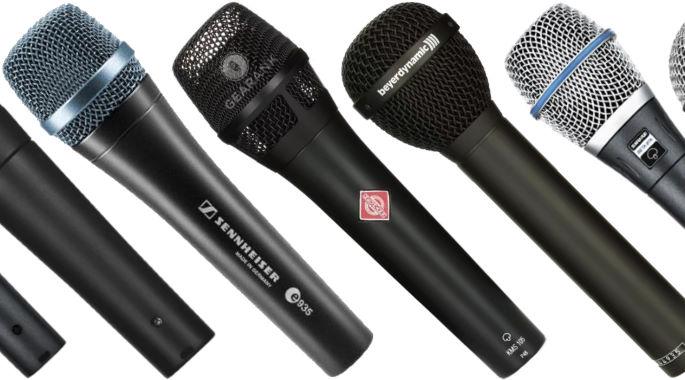
Author & Contributors
Raphael Pulgar
I've been an audio engineer for 20 years specializing in rock and metal recordings. I also play guitar and produce original music for my band and other content creators.
Best Handheld Microphone Under $100
While not exactly the cheapest, most "industry standard" microphones start at this price point. If you do want to look at cheaper options, then see our guide to The Best Microphones Under $50.
Shure SM58 LC
Cons
- Although good for live vocals, I wouldn't record vocals for release tracks with it
Pros
- The most rugged and reliable mics I've ever had
- I've also used them for recording demos and was pleased with the result
Shure launched the SM58 way back in 1966 and the basic design hasn't changed since then.
Although there are a growing number of audio engineers who think it's about time we all moved on to more modern mics, and despite all the advances in microphone design over the last 50+ years, the SM58 remains extremely popular.
These were the first serious microphones I ever had and my bandmates and I put them to good use both at gigs and for recording demos, and I have to say that after the years of abuse we put them through I can't ever remember one breaking down or failing in anyway - these are built to last.
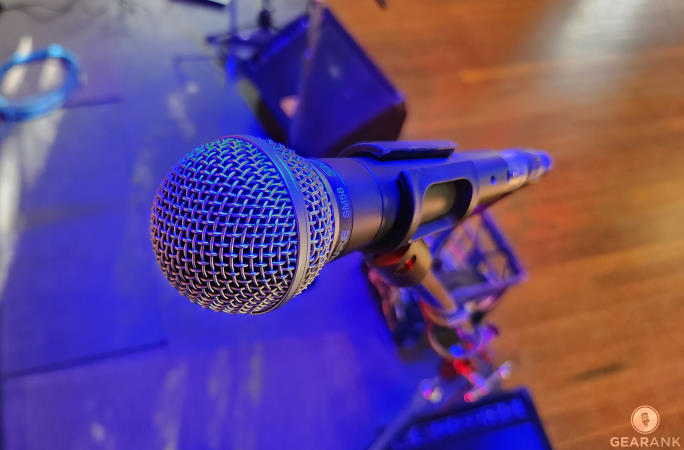
Although I've talked a lot about using the SM58 for recording demos, they are most at home on stage as a live vocal mic.
We recorded a lot of demos where we used the SM58 on just about everything from snare and toms to vocals and even guitar amps, and for the purpose the mic works absolutely fine. I wouldn't use them for vocals on a release recording myself, but I believe others have done so.
More modern mics don't have the SM58's severe drop between 7 and 8 kHz, but strangely enough this 'deficiency' has become part of the mic's trademark sound. When you sing through one of these you sound like many of the rock stars from the last few decades and I think this is part of the reason why the SM58 still tops the best seller lists at so many music stores.
If you want that classic rock vocal sound then this is a great mic to get. Even if you out-grow it later it will probably out-last your singing career and you'll find plenty of other uses for it if you get a more expensive mic at a later stage.
Specifications
- Type: Dynamic
- Polar Pattern: Cardioid
- Frequency Response: 50Hz to 15kHz
- Impedance: 300 Ohms
- Applications: Live vocals, also good for live instruments and amps
- Power Requirements: None
| Website | Source | *Rating Value |
| Gearank | Jason Horton | 96/100 |
| Gearspace | John Eppstein | 85/100 |
| SoundGuys | Lily Katz | 94/100 |
Shure SM58 Frequency Response Chart:
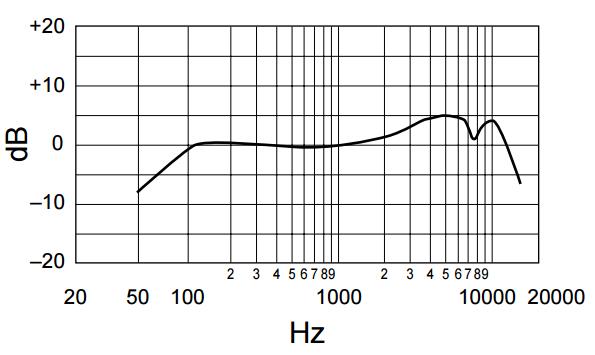
Shure SM58 Polar Pattern Chart:
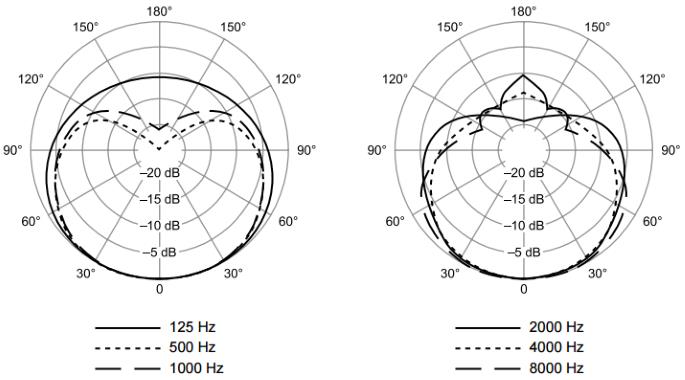
Here's a demo comparing the SM58 to the similar SM57 which Raphael wrote an extended review on here.
Best Handheld Microphone Under $200
In this price range there is a genuine step up in quality compared to those above, so if this is your price range, take a good look at the options below.
Sennheiser e935
Cons
- I actually have no complaints
Pros
- Its flat midrange gives it a natural sound
- Well built - durable
Sennheiser design and manufacture their microphones in Germany and their mics are very well engineered. The e935 is no exception; aimed towards natural sounding vocal captures, the e935 is designed to be relatively flat in the midrange with a slight high frequency boost.
This flat frequency response covers most of the vocal range resulting in very 'natural' sounding vocals. This makes it perfect for vocals that need to sit well with genres like Jazz where vocals need to be as natural as possible.
The e935 has a shock-mounted capsule for low handling noise and a hum compensating coil to reduce electrical interference. It's very solidly built, and while I've only worked with them a few times, they feel like they will last for years.
Sennheiser have earned their high reputation for quality and many owners say the e935 is not only the best dynamic mic in this price range, but equal to the highest rated mics even when compared to the condenser mics it competes with.
Specifications
- Type: Dynamic
- Polar Pattern: Cardioid
- Frequency Response: 40Hz to 18kHz
- Impedance: 350 Ohms
- Maximum SPL: 155 dB
- Applications: Live vocals, some use it for aocustic Guitar Micing
- Power Requirements: None
| Website | Source | *Rating Value |
| The Greatest Song | Editor | 96/100 |
| Gearspace | AndyHowell | 90/100 |
| Audiofanzine | Libertopanik | 100/100 |
Sennheiser e935 Frequency Response Chart:
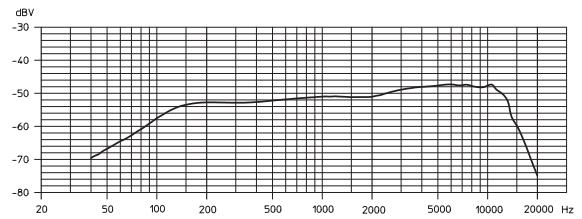
Sennheiser e935 Polar Pattern Chart:

Best Handheld Microphone Under $300
In this price range there is a genuine step up in quality compared to those above, so if this is your price range, take a good look at the options below.
Shure Beta 87A
Cons
- More prone to feedback than the SM58 (don't cup the capsule)
Pros
- Quiet operation - low handling noise
- Fairly solid for a condenser
- A good condenser to transition to if you're a SM58 user
The Shure Beta 87A is a condenser mic that's built for the stage, with its comfortable handheld profile, quiet operation and noise reduction feature.
Right off the bat, this mic comes with a super cardioid polar pattern that better rejects stage / background noise. In conjunction with its built-in low frequency roll-off feature and pop filter, the Shure Beta 87A also does away with problems like proximity and plosives.
While it's a common assumption to expect condenser mics not to be as reliable as dynamic mics, the Beta 87A is reliable enough to be used by many popular singers and sound engineers. In fact this is often one of the first condensers many bands add to their mic kit when they want to get more sparkle on the high end than the SM58 produces.
A word of warning; although many people get this as a step up from the SM58, you may have to make some technique adjustments because if you cup the mic, like rappers and heavy singers sometimes do, instead of getting a pronounced proximity effect you're more likely to cause feedback.
Some say you can't buy peace of mind, but the Shure Beta 87A comes quite close to it. Get it if you're curious about the condenser mic sound but don't want to stray too far from the Shure house sound.
Specifications
- Type: Electret Condenser
- Polar Pattern: Supercardioid
- Frequency Response: 50Hz to 20kHz
- Impedance: 150 Ohms
- Maximum SPL: 140.5 dB
- Applications: Live and recorded vocals and even live broadcasting
- Power Requirements: 11v to 52v phantom power
| Website | Source | *Rating Value |
| Audiofanzine | JimboSpins | 100/100 |
| Gearspace | bigmoods | 85/100 |
Shure Beta 87A Frequency Response Chart:

Shure Beta 87A Polar Pattern Chart:

Best Handheld Microphone Under $500
These are great mics that are starting to implement more upscale technologies and better build quality.
Beyerdynamic M 88 TG
Cons
- Can feedback at loud volumes
Pros
- Female vocals sound warm
- Male vocals sound authoritative with depth
Made popular by Phil Collins, the Beyerdynamic M 88 TG is a Hypercardioid pattern Dynamic microphone designed for rigorous tour usage.
The TG stands for "Tour Group" and is spec'ed with a reinforced basket to withstand rough handling and damage.
Tonewise, the M 88 TG favors a rich low mid and low frequency range without sacrificing higher frequency response. This tends to make female vocals sound warmer while male voices get more authority and depth.
The Beyerdynamic M 88 TG earned its reputation as the "Phil Collins Mic" but that doesn't mean it only suits his particular voice type. The M 88 TG excels with adding weight to thinner voices and authority to deeper ones.
Specifications
- Type: Dynamic
- Polar Pattern: Hypercardioid
- Frequency Response:30Hz-20kHz
- Impedance: 200 Ohms
- Power Requirements: None
| Website | Source | *Rating Value |
| Gearspace | monkeyxx | 90/100 |
| Audiofanzine | JimboSpins | 60/100 |
Beyerdynamic M 88 TG Polar Pattern Chart:

Beyerdynamic M 88 TG Frequency Response Chart:

Best Handheld Microphone Under $1000
These top of the line mics get some of the best tech and build quality that you can find and will find applications both live and in the studio. If you are a singer that is looking to improve and make refinements on your live, or even recorded sound, this is the best range to look at.
Neumann KMS 105
Cons
- Many female pop singers will probably prefer the KMS 104 instead
- Not suited to metal and hard rock
Pros
- Very 'natural' sound
- Works well with a wide range of voice types
- Excellent feedback rejection
- Excels at Pop, Rock and Jazz and similar styles
The Neumann brand is very highly regarded for their studio microphones and that reputation carries over into their live handheld mics as well. Michael Buble and Norah Jones are two well known singers who use the Neumann KMS 105 in live concert.
The supercardiod polar pattern of the KMS 105 makes it exceptionally good at rejecting sound from a full 180° behind the mic, so you can have a nice loud and clear mix in your stage monitors (if they sit in front of you). It also uses electronic compensation to control the proximity effect - it has a 120Hz high-pass filter.
Although the KMS 105 works well for most kinds of vocals, Neumann also have the similar KMS 104 (link to Sweetwater) which is optimized for female rock and pop singers.
One drawback is that unless you have a decent PA system with good mic preamps then you won't get the full value out of this mic and you may as well get a cheaper one instead. Also if you're using the Bose L1 which is popular with singer/guitarists, you won't get the benefit of the high-end sparkle this mic is capable of due to the L1 being limited to 14kHz.
The Neumann KMS 105 is best suited to jazz, middle of the road, pop, and acoustic artists where the crystal clear sound can really shine as opposed to heavy metal or hard rock artists where the fine nuances of this mic are lost on stage.
Specifications
- Type: Condenser
- Polar Pattern: Supercardioid
- Frequency Response: 20Hz to 20kHz
- Impedance: 50 Ohms - Load impedance is 1000 Ohms
- Maximum SPL: 150 dB
- Applications: Live and recorded vocals + recording acoustic guitar
- Power Requirements: 48v phantom power
| Website | Source | *Rating Value |
| Audiofanzine | sw80 | 100/100 |
| Audiofanzine | James | 80/100 |
Neumann KMS 105 Polar Pattern Chart:
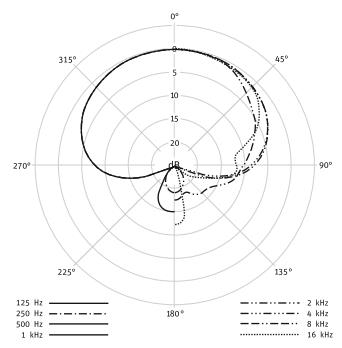
Neumann KMS 105 Frequency Response Chart:

Things To Consider When Buying A Live Singing Microphone
-
This might seem like a trivial issue, but it isn't. In general you do not want handheld microphones with switches that can be easily accidentally turned off. Many live audio engineers don't like on/off switches because it's really difficult to trouble shoot a mic drop-out in the middle of a performance and frustrating when you track it down to the singer turning it off. The exceptions are mics that have switch locks so they can't be turned off by mistake, or if you only intend to use them for karaoke where it's better to turn the mic off in between singers.
-
If you go back 20 years or so you would usually only find Condenser mics in recording studios, and mainly only Dynamic mics on stage - particularly for vocals. This was largely because condenser mics were very fragile and prone to feedback. But times have changed and advances in microphone design have meant that Condenser mics that are specifically designed to be hand held are now capable of delivering 'studio quality' results at live shows. Dynamic mics typically have a lower frequency range but sound 'warm' whereas condensers typically have a much higher frequency range and tend to sound 'brighter'. Condenser mics typically require their own power supply to work properly - either from a battery or phantom power supplied by a mic preamp or mixing desk. Dynamic mics are generally still a bit sturdier than condenser mics, but if you look after your microphones well then this shouldn't be much of an issue. If after reading this you're still unsure which type of mic would be best for you, then get one of each and spend time singing through both of them until you find which type suits your vocals.
-
 This is which direction(s) a microphone absorbs sound from. For singing live you generally only want microphones that accept sound from directly in front while suppressing sound that comes from the back or the sides - this is to reduce problems with feedback coming from your stage monitors or front of house speakers. Most microphones used in live performance have a Cardioid polar patter, or a variation of that, to help prevent feedback. The image on the right is an example of a cardioid polar pattern.
This is which direction(s) a microphone absorbs sound from. For singing live you generally only want microphones that accept sound from directly in front while suppressing sound that comes from the back or the sides - this is to reduce problems with feedback coming from your stage monitors or front of house speakers. Most microphones used in live performance have a Cardioid polar patter, or a variation of that, to help prevent feedback. The image on the right is an example of a cardioid polar pattern.
-
Frequency response is measured in Hertz (Hz). Each microphone has its own characteristics in terms of which frequencies it emphasizes or de-emphasizes. An ideal microphone has a flat response across the entire range of frequencies it responds to, however that is only found in high-end mics. That said, some mics have their own idiosyncratic frequency responses which give them a signature sound musicians have come to really love in certain styles of music - the SM58's classic rock vocalist sound is a great example. If you have a high pitched voice then you might want to be careful using a mic which emphasizes the highs because without proper EQ'ing this could lead to your singing sounding harsh. If you have a low register and you really want to emphasize that then you might look for mics that are strong below 200Hz. If you know your vocal characteristics well then you'll find the frequency response charts to be quite helpful. If all this sounds a bit too technical leaving you uncertain, then get a microphone that is often used in the style of music you perform and you shouldn't have any trouble.
-
When you get very close to any kind of directional mic, one with anything other than an omnidirectional polar pattern, you will notice an increase in volume of the low frequencies. This can make your vocals sound 'warmer'. Typically cardioid dynamic mics have the strongest proximity effect and you see it put to good use live often by male singers and rappers. Some manufacturers supply data on the proximity effect of their microphones and when they do you'll see an extra line showing it in the frequency response chart for the mic.
-
Without getting too technical, impedance can be best thought of as the amount of resistance an electronic device has to electric current flowing through it. A microphone should only be plugged into equipment that has the same or a higher impedance rating otherwise you'll get a loss of signal. Most handheld mics are low impedance (below 600 Ohms) so they generally don't have any issues when used with 'pro' sound gear. If you're unsure about the equipment you'll be using your mic with, such as a low-cost 'consumer' karaoke machine, then it doesn't hurt to check to make sure the mic you want to buy has the same or a lower impedance than the system you're going to plug it into - you can check the manuals or specification sheets of both devices to make sure.
-
This indicates the maximum volume, measured in decibels (dB) you can expose a mic to before it starts having problems like distortion. Very few people can sing loud enough to ever worry about this, but if you're also going to use your mic on amplifiers or loud instruments like drums, then you should opt for a mic with a high Max SPL. If you're unsure how loud something is then you can measure that with an SPL meter - I have an app on my phone that does that which is accurate enough for this purpose, alternatively you can buy hardware SPL Meters (link to Sweetwater) which tend to be more accurate. Speaking sound pressure level, our ears aren't meant to handle too much of them, hence the need for Ear Plugs in very loud stages and venues.
-
This gear guide is primarily focused on microphones for singing live. Some good live vocal mics can also be used for other applications such as recording or miking some kinds of instruments and/or amplifiers. Typically a good live condenser microphone will also serve you well for recording vocals or even acoustic guitar (see our acoustic guitar mic recommendations here). Good dynamic mics will sometimes work well for miking amplifiers both live and for recording. If you also like to record at home, getting a versatile mic that can serve multiple applications will allow you to get more bang for your buck.
-
Dynamic microphones usually don't require any power to work but Condenser mics do. Some of them take batteries and others need phantom power. Most live mixing desks these days do provide phantom power, but not all do. If your mic requires phantom power and your mixing desk doesn't provide it then you'll need to get a mic preamp or a vocal effects processor to provide the power. Vocal processors also give you access to different Vocal Effects, including formant shift and Vocoder.
Note that for Dynamic Mics you can get a device like the Cloudlifter CL-1 to boost the mic's signal, but they in turn usually require phantom power to operate.
On/Off Switch
Dynamic vs Condenser
Polar Pattern
Frequency Response
Proximity Effect
Impedance
Max SPL (Sound Pressure Level)
Applications
Power Source - Phantom Power
Best Handheld Vocal Mic Selection Methodology
The first edition was published in 2016.
We first scoured the US market for sub-$1000 popular and highly rated wired handheld microphones (wireless mics are in a separate guide) including both dynamic and condenser models.
This is such a huge category, and so competitive, that we ended up with 79 microphones on our 'short-list' to produce ratings for. We collated over 58,900 product ratings, reviews and forum discussions which we fed into the Gearank Algorithm to produce the rating scores out of 100 that you see above - that's a 20.2% increase in rating sources over the previous edition.
Finally, we selected the highest rated mic in each of the price brackets above to recommend. For more information about our methods see How Gearank Works.
About the Author and Contributors
Here are the key people and sources involved in this guide's production - click on linked names for information about their music industry backgrounds.
Lead Author & Researcher
Raphael Pulgar
I've been an audio engineer for 20 years specializing in rock and metal recordings. I also play guitar and produce original music for my band and other content creators.
Contributors
Alexander Briones: Supplemental writing.
Jason Horton: Shure SM58 Review, Editing and Illustrating.
Media
Main/Top Image: Created by Gearank.com using photographs of the Shure Beta 87A, Shure SM58 LC, Sennheiser e935, Neumann KMS 105 and Beyerdynamic M 88 TG.
Videos have been embedded in accordance with YouTube's Terms of Service.
The individual product images, frequency response charts and polar pattern charts were sourced from their respective manufacturers' websites, promotional materials or supporting documentation, except for the additional Shure SM58 photo which was taken by Daniel Barnett.



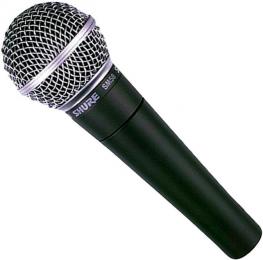
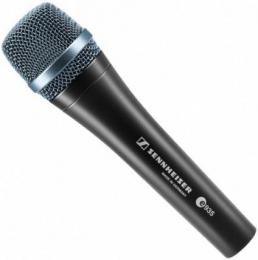
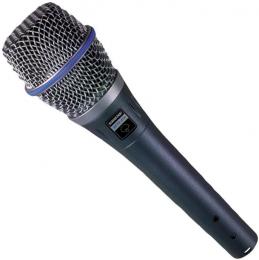
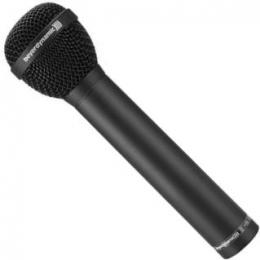
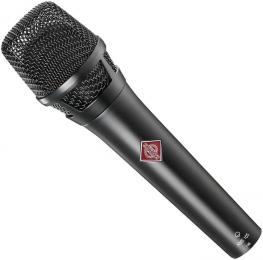
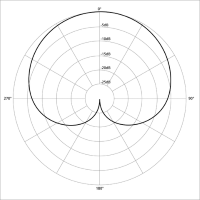 This is which direction(s) a microphone absorbs sound from. For singing live you generally only want microphones that accept sound from directly in front while suppressing sound that comes from the back or the sides - this is to reduce problems with feedback coming from your
This is which direction(s) a microphone absorbs sound from. For singing live you generally only want microphones that accept sound from directly in front while suppressing sound that comes from the back or the sides - this is to reduce problems with feedback coming from your 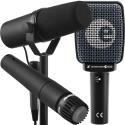
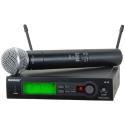
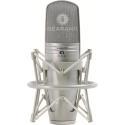
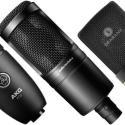
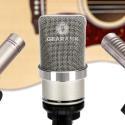

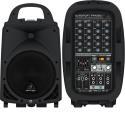
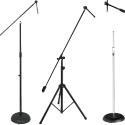
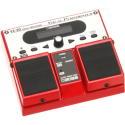





Comments
Publication of our August
Submitted by Jason Horton on
Publication of our August 2022 Edition, in which we reduced our recommendations to only the highest rated in each price bracket, resulted in the following mics being removed from the recommended list:
I am looking to upgrade my
Submitted by AMV (not verified) on
I am looking to upgrade my mic. I sing with full reggae band, and my voice is soft and warm. Sometimes it gets lost with all the instruments, i am looking for a good mic that picks up my voice so i do not have to strain or "fight" in order to be heard in some parts of some songs... Which mic would be good for this type of voice?
Hi AMV,
Submitted by Raphael Pulgar on
Hi AMV, Most of the time, if you're singing live and straining, it's either you can't hear yourself through the monitors properly and there isn't enough vocal compression on the mixer to even out your voice. Stage volume management is also an important factor. If you're performing with a large PA system, there is absolutely no reason to have a stage volume louder than the FOH. Not only does it hinder your ability to hear yourself, it also gives the FOH engineer a hard time mixing your band. I suggest, before looking into mics, that your band assess stage volume management and asking your engineer for more monitor on your floor wedge. Because if you choose a more sensitive mic with your stage volume very loud, FOH mix engineer won't be able to turn up your vocals because of the risk of feedback. If you absolutely must hear yourself while monitoring, a good Wireless In-Ear Monitor will help you hear yourself so you wont have to strain yourself. Combine good stage volume management with proper monitoring and you won't have to strain yourself again. The FOH mix engineer will then be able to mix your voice into FOH without the stage volume affecting clarity and you will sound better as a result. I hope this insight helps. -Raphael
We've removed the AKG D5 from
Submitted by Jason Horton on
We've removed the AKG D5 from the Under $100 section due to a price increase.
Very surprised you didn't get
Submitted by Robert (not verified) on
Very surprised you didn't get any of the Electro-Voice mics into your reviews. As someone who relied on the old standard SM58 for many years, about 14 yrs ago I went to the music store for a new one. The sales guys there suggested one of these, and actually plugged them both in for a good side by side A/B demo. I was just floored at the sound of the EV mic. The difference in presence and clarity over the 58 was obvious and profound!! They may not have the "bullet proof" reputation of the Shures....but mine is going on strong for 14 plus years now. So, we'll see.
[Advertising link removed by the Editor - Here's an internal link to the referenced Electro-Voice ND76]
Publication of our April 2021
Submitted by Jason Horton on
Publication of our April 2021 Edition resulted in the following mics coming off the recommended list above, but you can still see our analysis of them:
Thanks for this great guide.
Submitted by Raf (not verified) on
Thanks for this great guide.
I play acoustic guitar while singing in small spaces.
The kind of music is James Taylor (my voice tonality is about similar) or Eric Clapton unplugged. Unfortunately I have a thin voice.
I am using Shure SM58 for live and Rode NT1A in studio but would like to upgrade. I have not a good mic technique, playing guitar I tend to move my had around mic.
Of course I can’t afford Earthworks.
What is your suggestion?
Senn e935
Shure Beta 58
Shure Beta 87A
Heil PR 35
Thanks
Hi Raf,
Submitted by Raphael Pulgar on
Hi Raf,
Among your picks, the Heil PR has a flatter response down to the low midrange which can help add some body to your voice. It has a very natural tone that would help address your concerns with the SM58, which has a bass roll off earlier than the Heil PR 35. I would recommend the M 88 TG but if you're sticking to lighter singing, it might sound too dull especially for smaller venues. Give the Heil PR 35 a try. I know a few artists that use them for folk and the richness in tone is evident vs a 58.
-Raphael
We are playing in a rock band
Submitted by Hugo (not verified) on
We are playing in a rock band. The singing style of my vocalist is a bit like 80s hard rock/ hair metal vocalist, mostly singing in the range of tenor and baritone. Which microphone would you recommend, e965, ksm9 and kms105?
Hello Hugo,
Submitted by Raphael Pulgar on
Hello Hugo,
I would actually recommend the M 88 TG. It has a nice low frequency richness that accentuates tenors really well especially during high notes where more treble-oriented mics usually make the voice sound harsh.
-Raphael
Is it possible to get a good
Submitted by maurice hearne (not verified) on
Is it possible to get a good affordable micro mic (maybe attached to headphones) for singing, with guitar accompaniment through an acoustic guitar amp, in small venues - say 30 people or less.
Hi Maurice,
Submitted by Raphael Pulgar on
Hi Maurice, Unfortunately there will always be compromises when using small lavalier type microphones and headset mics. The first thing is that lav mics are very prone to movement noise when clipped onto clothing so it might be a bit distracting to your audience. For headset mics, the good ones are usually very expensive with the cheaper ones sounding like bad gaming headset mics. Your best bet is to go with a good vocal condenser mic. Dynamic mics need to be up close to your mouth and might hinder your ability to "vibe" with the song so to speak. We currently updated this guide. Do check it out and see which one fits your needs and budget. -Raphael
Hi there, what a great
Submitted by Lalito (not verified) on
Hi there, what a great article. Thank you so much.
At the moment, earhtworks prices dropped to $749.
I was looking towards the d:facto 4018V and was almost ready to purchase a B stock for $725 and one year of warranty.
I’m a countertenor artist, using my voice in a very intense performative way, from operatic vocals, to shamanic voice drone and animal voices, looping vocals Live. I play with the Apollo Twin X Duo, Altiverb7 and Ableton. I need exactly what these two mics are supposed to be offering: studio sound on stage.
What would you do if you were me?
Thank you
Hi Lalito,
Submitted by Raphael Pulgar on
Hi Lalito,
I checked the frequency response of the D:facto 4018V and found that it has an excited high frequency range might cause a countertenor voice to sound shrill. The Earthworks' flatter high frequency response would work more to your advantage and give your sound engineer more control. A flatter frequency response is also better for tone shaping with processors as you have mentioned.
-Raphael
Thank you Raphael! Great call
Submitted by Lalito (not verified) on
Thank you Raphael! Great call. Are you talking about the D:facto 4018V soft boost maybe? They bring it in two versions. The soft boost version and the Linear version that is supposed to be completely flat.
It took me ages to get back, as I was recording an album with the D:facto 4018VL - Linear version. My sound engineer got me this one for the studio recs, but as we were recording live, he thought it would be better to record with a great live mic like this one.
Before that, I had tried the soft boost version and indeed it was bringing some frequencies in that weren't mine and this didn't work. Then I talked with DPA and they confirmed that was I needed was the Linear version. I'm quite happy with the outcome and I'm now thinking to purchase the Linear D:facto 4018VL. Still, I don't know how the Earthworks sounds at all and it's not easy at the moment to just go to a store and try it.. I guess I'll have to go by instinct. Thank you!
Could you tell me what I
Submitted by sandra elms (not verified) on
Could you tell me what I would need to use for a simple choir, made up of people with disabilities, who regularly perform at functions. I need something to enhance the sound, without it costing too much. I am thinking a condenser microphone, speaker etc. Would be grateful for your help.
Hello from Sydney, Australia.
Submitted by Norm Bakker (not verified) on
Hello from Sydney, Australia. I am an ETA artist and use Sennheiser e935 also ew500-965 vocal-set, and they are both great and suits my bass /tenor voice.
I was wondering whether or not either the "Neumann KMS 105" or "Earthworks SR40V Condenser Mic's would be suitable as I would like to try something different. Maybe even Audio-Technica AE5400 might be suitable. I thought that I knew something about Microphones, but after reading all your info I was blown away. Thanks for sharing your expertise greatly appreciated guys.
Have you considered the se
Submitted by Randy (not verified) on
Have you considered the se Electronics V7?
The sE Electronics V7 has a
Submitted by Jason Horton on
The sE Electronics V7 has a lot of fans, including Paul White at Sound on Sound, but it didn't have high enough ratings for us to include it in our recommended list above.
I've just published our ratings which you can see here: sE Electronics V7.
Thanks for the comprehensive
Submitted by Fid (not verified) on
Thanks for the comprehensive guide! Yet, having read some reviews and discussions on live microphones, I'm confused. What is said about some microphones seems to contradict what the frequency response curves seems to say.
I'm singing a big variety of styles and my experience with recording vocals at home tells me a few things to look for: The microphone should have a flat frequency response down to 100 Hz. Parts of my low vocals (which contain frequencies down to 30 Hz) are quite low volume, so some proximity effect could be good to boost them. On the other hand, the volume varies along in my vocals, so I have to change the microphone distance a lot anyway and I don't want to have too much of an artificial change in the timbre associated with that. Most of all, I don't want the most powerful parts, where I have to back up, to sound thin.
Beyond that, I've found that a boost around 5 kHz benefits the sound of my voice, while a boost around 2 kHz gives it an unpleasant nasal quality. The clarity, especially the quality of high distortion, screams and "breathy" passages suffers if the frequencies at > 12 kHz are not captured by the microphone well. A slight amplification of the region at 8-15 kHz would be desireable.
I've read that Sennheiser 945 is superior to the 845, has a clearer sound etc. Looking at the frequency response, however, I'd say just the opposite. As I read it, the frequency response is better for 845 in all mentioned aspects. The curve of 945 makes a plunge even at 13 kHz, which would. Is my voice type just different or does the frequency response chart not tell the whole story?
Besides Sennheiser 845 and 945, I'm also considering the following options:
Sennheiser 935
Audio-Technica AE6100: Seems to have a very nice frequency response, but maybe the boost of the highs is too extreme. Also not sure, if it's really robust.
Rode S1: Are the two curves near/far field or on/off axis?
Heil Sound PR35: Not listed here - it is both said to have a very nice sound and the frequency response looks amazing, although some say the bass is too extreme (in the near field??) and it is very sensitive to handling noise and low frequency consonants.
Could you recommend a microphone for my purpose?
Hi Fid,
Submitted by Raphael Pulgar on
Hi Fid,
Based on your style, I'd recommend the Sennheiser e935. It has a nice lift at around 4-5khz with a steady taper onwards so it will sound more "hi fi" without being sibilant. I've had experience with the Heil PR35 but as a snare mic (which it does a surprisingly great job at).
The S1's curves are near/far not accounting for excessively close proximity due to poor mic technique.
The AE6100's 5khz spike might present a problem if your voice is overly sibilant. But that's just the nature of the tradeoff between high frequency response and icepick "s" and "sh" sounds.
-Raph
What about Audio Technica
Submitted by Anıl (not verified) on
What about Audio Technica ATM710 and Lewitt's like LCT series and MTP 350 (condenser), MTP 550 (dynamic) ??
Hi Anil,
Submitted by Raphael Pulgar on
Hi Anil,
The ATM710 did not make it to our list because of its rating of 89 on our database. Though I have personally mixed a live session (rock) with ATM710 mics, I still much prefer dynamics like the SM58 as the bleed from stage noise was more manageable. Handheld condensers like the ATM710 work best with quiet stage volumes and/or in-ear monitoring.
As of writing, we haven't examined Lewitt microphones in detail yet. The LCT series consists of large diaphragm condenser mics better suited in a studio environment or overhead mics in a live setting. Should there be new information, there may be a chance that it will be included in a future update.
-Raph
As a result of the November
Submitted by Jason Horton on
As a result of the November 2018 update the following mics came off the recommended list for this guide, but are being recommended in other guides:
The following mic is not currently on any of our recommended lists but you can still read our analysis:
I'm hesitating between
Submitted by Steeve Allard (not verified) on
I'm hesitating between Sennheiser e835 and e935, and I'm very seduced by all the reviews on e935. The price is not important for me. But I heard that e935 has not a good feedback rejection. Our band have a practice room is very small, with speakers all around the place. Can I trust the e935 ? Or e835 would be better ? Thanks !
When I researched both the
Submitted by Jason Horton on
When I researched both the e835 and e935 I didn't find consistent reports of the e935 having a feedback problem, however that research was done last year so I'll pay close attention to this possibility when we revise this category. Can you provide a link to any reports about feedback problems with the e935?
Use them for live shows for 4
Submitted by Hensley (not verified) on
Use them for live shows for 4 years. Better feedback rejection than my Bunch of sm58 and beta.. and still rock solid.
No. That's my problem. All
Submitted by Steeve Allard (not verified) on
No. That's my problem. All reviews I found on the net were positives. It's 2 sellers from a music store said to me that the e935 can have feedback rejection problem compared to e835.
Thanks for the follow-up. I
Submitted by Jason Horton on
Thanks for the follow-up. I'll still keep an eye out for any other reports of feedback issues.
FYI - Hi, I've bought
Submitted by Steeve Allard (not verified) on
FYI - Hi, I've bought sennheiser e935 yesterday, and after 2 hours testing with my rock band, no feedback issue, in a small room with 4 speakers around us. Case resolved. :-)
Thanks.
Steeve
Glad to hear it worked out
Submitted by Jason Horton on
Glad to hear it worked out for you - and thanks for letting us know.
Outstanding. I use both the
Submitted by Elizabeth (not verified) on
Outstanding. I use both the Shure beta 58 and the 55 in live performance. I had a very frustrating experience last night where the sound guy at a large outdoor venu would not let me use then 55 due to feed back issues. He said I need to use an in ear monitor with it. What do think about that? I’ve never had this issue before...
AKG D5 didn't make this list?
Submitted by randall selinger (not verified) on
AKG D5 didn't make this list????? Really?????
The AKG D5 is a very good
Submitted by Jason Horton on
The popular AKG D5 is a good $100 mic with an innovative variable thickness diaphragm and I wouldn't be concerned if we had recommended it.
It was short-listed for the $100 price bracket above and we decided to base our selections on the ratings. Here are the top 8 mics on that short-list, sorted by their ratings, and you can see that the 2 we selected for recommendation stood out well above the rest.
I am an Opera singer with a
Submitted by Mehlinda Heartt (not verified) on
I am an Opera singer with a considerable large dramatic soprano voice and range, I sing many times outdoor, and only once did I have a good experience with a mic, I wished I would have asked what system and mic they used. I have tried Shure beta 58, but it does not represent my voice well, like a live acoustic, I am not sure which mic would be best for outdoors, any suggestions? So hard to find the right mic. I have a Bose Amp system, mixing board, and a preamp
The Shure Beta 58 is a
Submitted by Jason Horton on
The Shure Beta 58 is a dynamic microphone, however condenser mics are generally better suited to operatic voices.
I would recommend getting the best condenser mic you can afford - the Shure KSM9 would be a good choice.
The d:facto isn`t on the list
Submitted by Jensen (not verified) on
The d:facto isn`t on the list?
The d:facto II was on our
Submitted by Jason Horton on
The d:facto II was on our recommended list but it has been discontinued so we removed it last year.
Currently we don't have a rating on the d:facto 4018V which is still available.
What should be the difference
Submitted by Nikolai Beier (not verified) on
What should be the difference besides a name change, between a DPA d:facto II" and a "DPA d:facto 4018V" (with product ID 4018V-B-B01 for the same capsule 4018V and a XLR handle in black).
It seems like DPA changed product names to follow a more systematic system, that better reflects the combinations of modular components they offer.
PS: The d:facto variant offered in a short period before "d:facto II" became available (introducing the interchangeable set of adaptors for wireless transmitter handles), was not called "d:facto 4018V", and I have first seen this name after DPA stopped using the name "d:facto II".
Found the guide so helpful
Submitted by koko (not verified) on
Found the guide so helpful thanks.
Although this article is
Submitted by Bianca (not verified) on
Although this article is extremely helpful, I was wondering if you could advise me further on what mic to get.
I sing at Restaurants and will soon be singing on cruise ships, and am needing a new mic to take along. My amp is relatively simple so I think that I should stick with a dynamic mic. I have a very strong voice and a loud belt but need a mic that will be able to pick up my softer falsetto. I really like the look of the Shure SH55 Series II but because I will need my mic for recording at home, I was unsure of this option.
I can't advise you on your
Submitted by Despina (not verified) on
I can't advise you on your voice, I'm alto,to light soprano and if you ever want to hear my voice you can email me. just put in the subject Bianca to let me know to accept the email. elladitsa@mac.com. I sing internationally as well. My engineer recommended me a condenser for it enhances our voice better and I do like how my recordings sound with it. I'm saving up for this audio Technica 5400 but I have the shure55 deluxe and its awesome. but I can't walk around with it, I have to stand in one spot so I'm selling it on ebay to have enough money to go a little higher in value. The more you pay the better you get. I also need advice on what phantom power I need for this. what cable and so on. I have the 48 presonus I got from sweet water + mogami cable and a beheringer box I forgot in Europe. Lets see if those are good enough. The shure 55 is excellent but you have to stand there, where I like to have a hand held so I can walk around a little on the stage . Its like expressing yourself. In anycase I wish you the best of luck!!!! :D Hope you get the right advice very soon
Great info thanks. Btw, I’ve
Submitted by Milo (not verified) on
Great info thanks. Btw, I’ve used a Blue Encore 300 as a drum overhead before. It did a great job. Better than some Senn overheads I’ve used.
I simply wanted to give a
Submitted by MoBass (not verified) on
I simply wanted to give a kudos to you guys for providing this info. I'm actually a bass player with a few groups of all different styles of music from blues, to rock, to R&B, Gospel & even a little country and have tasked myself with running sound with little to no knowledge of how to do so, what mics to use, speakers...etc. Few youtube links on speaker setup, and live sound have helped me a great deal, and then today I stumbled upon your reviews on the different mics & their specs and just want to say thank you for this info yet again. It has been a great help. Tip my hat to you guys, and keep doing what you do.
Thank you very much MoBass!
Submitted by Jason Horton on
Thank you very much MoBass! Nearly our whole team worked on this guide and words of encouragement like yours are really appreciated by all here at Gearank.
We have updated this entire
Submitted by Jason Horton on
We have updated this entire guide today and 5 mics were removed from our recommendations above - if you want to read what we had to say about them then here are our meta reviews:
Today we removed the AKG C535
Submitted by Jason Horton on
Today we removed the AKG C535 EB from the guide above because it has been discontinued - you can still read our analysis of it here: AKG C535 EB Handheld Condenser Stage Microphone .
I am a novice at all of this
Submitted by Sponge (not verified) on
I am a novice at all of this and know nothing about electronic equipment.
I will be doing some live local singing performances (solo) for the first time and have no idea what kind microphone to buy that's under $300. Since I will be singing outdoors, I assumed that I would need an amplifier (loud speaker?). I bought a 1000W Thump12 loudspeaker. What kind of microphone should I purchase. Does it plug into the back of the amplifier?
Also, I don't understand what phantom power is and what sort of "phantom power" equipment is needed for a mic that runs on phantom power. Sorry for my ignorance but I'm hoping you will help me out.
Thanks.
Before being able to provide
Submitted by Jason Horton on
Before being able to provide you with a useful answer, we'll need to know if you'll be singing just on your own with no music, or will you be singing to music and how is that music supplied - will it come from pre-recorded music or will live musicians be playing with you?
Thanks! Great and insightful
Submitted by Jeffrey (not verified) on
Thanks! Great and insightful article. Learnt a lot. So I want to know...I am a musician and I have a church choir with a large number. Say 50 plus. I would want a microphone(s) that I can mount above their heads and yet be able to pick up every detail in their voices...this is important for the harmonies. Any help please? Budget shouldn't be problem. I want to know the options available and also are there any roof embeddable microphones for music concerts? Regards
Pages